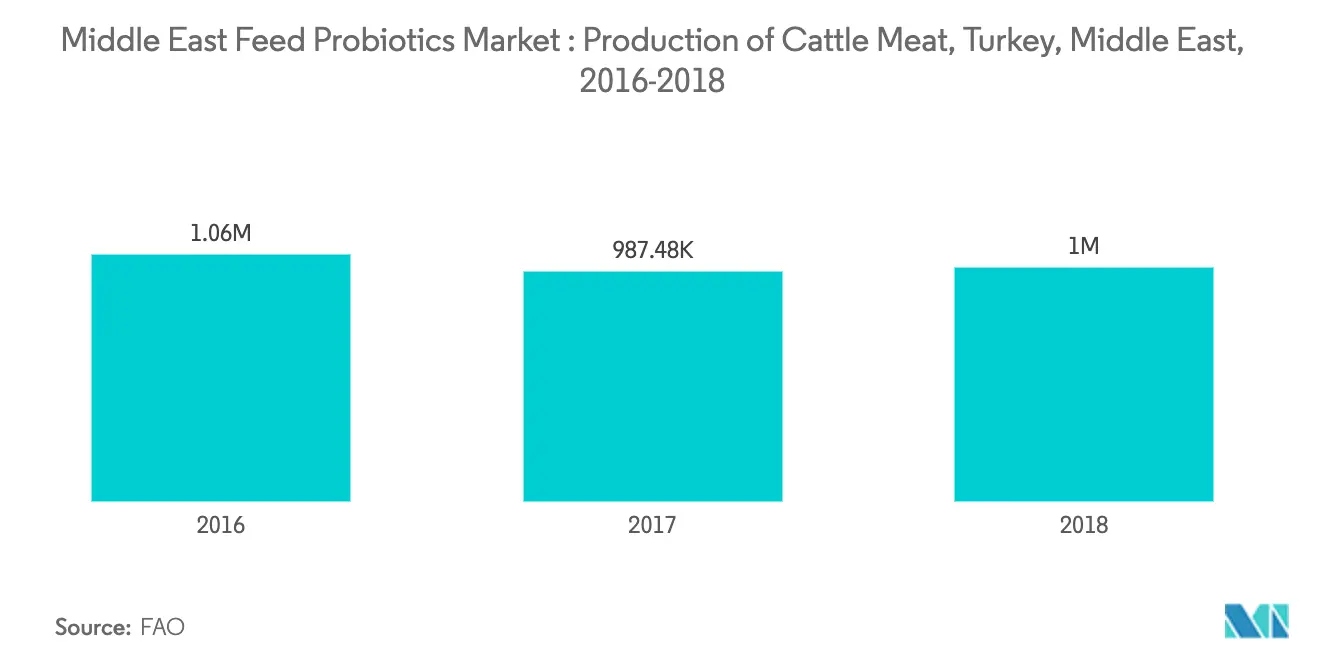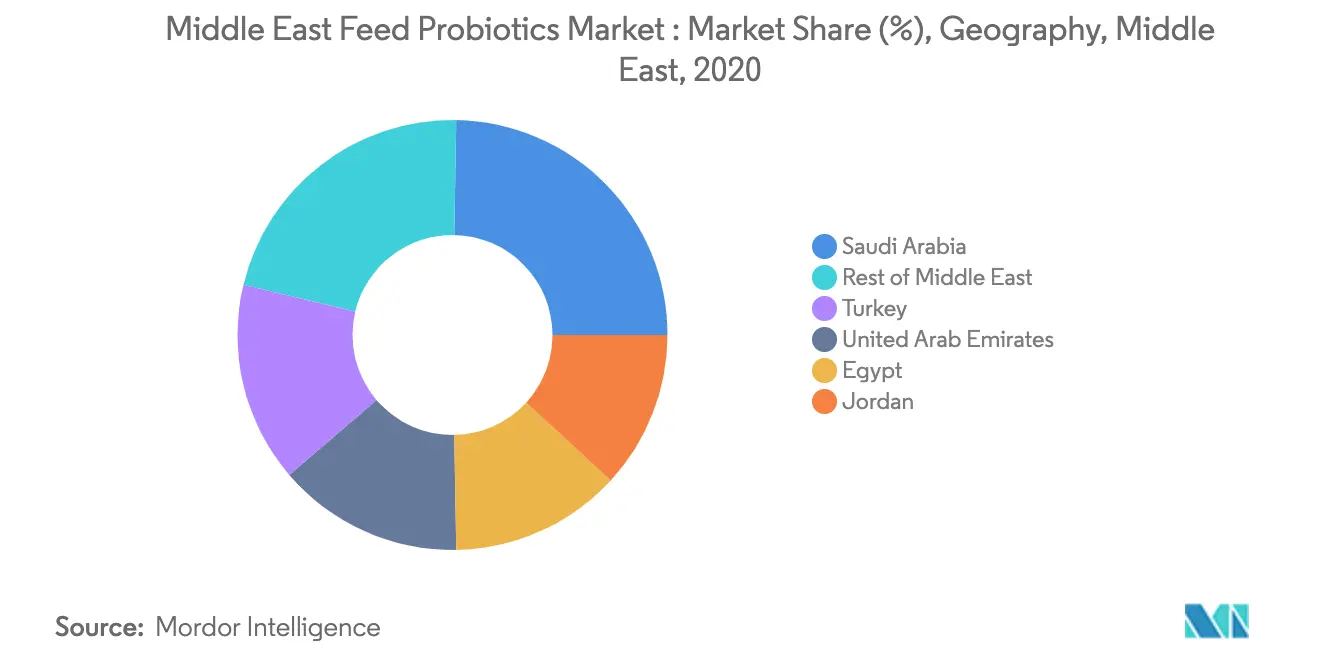Market Trends of Middle East Feed Probiotics Industry
This section covers the major market trends shaping the Middle-East Feed Probiotics Market according to our research experts:
Growing Demand for Meat
Meat is highly demanded across Middle-Eastern countries and forms a part of their staple diet. According to a study conducted by the Ministry of Foreign Trade, meat consumers in the United Arab Emirates consume 18 times more than the global average. The country reached 79.0 kg per capita consumption of meat in 2019, which is anticipated to fuel the growth of feed probiotics in the country, to meet this rapidly growing meat consumption. Animal feeding plays a leading role in the middle eastern feed industry, and feed is the largest and most vital component to ensure the sustainable production of safe and affordable animal proteins for the generation of healthy meat.
The main meat producers in the Middle East are Egypt, Turkey, and Jordan, among other countries. According to the Food and Agriculture Organization, cattle meat production increased from 987,482.0 metric ton in 2017 to 1,003,859.0 metric ton in 2018, owing to the increased demand for meat in Turkey. More use of feed probiotics has led to an improvement in growth, reduction in mortality, and improvement in the feed conversion efficiency of animals. Thus, the middle-eastern farmers may demand feed vitamins to produce better meat quality for consumers in the Middle-East. This is expected to drive the feed probiotics market to promote healthy growth in the animals.

Saudi Arabia Dominates the Market
Saudi Arabia dominates this market, followed by Turkey, the United Arab Emirates, and other middle eastern countries. The livestock feeding in the Middle Eastern region is highly dependent on agricultural products like maize, sorghum, soybean meal, groundnut meal, and rice bran. However, with rising livestock and animal health standards and the subsequent large-scale adoption of compound feed, several probiotics are also included in livestock diets across the region. ARASCO is the dominant animal feed processor in Saudi Arabia.
Cattle and Bufelloes population in 2016 was 361.36 thousand heads that have increased to 567.04 thousand heads by 2019. During the same period, the poultry population had increased from 190.1 million to 196.9 million. In 2019, feed production in the country accounted for 7.2 million metric ton from 11 mills. Of the total feed production, feed for broiler, layer, and dairy feed accounted for 2.02 million metric ton, 0.62 million metric ton, and 1.43 million metric ton, respectively. This indicates higher demand for probiotics for these segments.
Moreover, in Saudi Arabia, the Consumer Protection Society (CPS) called out against the injection of antibiotics in meat and is currently working with the Saudi Food and Drug Authority (SFDA), to limit the usage of antibiotics in meat, which may eventually lead to prolific opportunities for ventures targeting the Saudi Arabian feed probiotic market.

